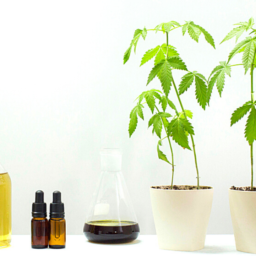Corticobasal degeneration (CBD) is an example of an atypical parkinsonism. Atypical parkinsonisms–which are also called Parkinson’s-plus syndromes–have symptoms similar to Parkinson’s, but they have different underlying pathologies and tend to progress differently than Parkinson’s.
Like Parkinson’s, CBD pathology involves neuronal damage caused by protein accumulation. The primary protein that accumulates in Parkinson’s is alpha synuclein. The primary protein that accumulates is tau. Tau accumulations are also associated with Alzheimer’s, progressive supranuclear palsy, and other conditions. It is difficult to distinguish between these conditions because they often have similar symptoms.
CBD is rare. In 2022, Swallow et al. for Movement Disorders Clinical Practice shared that approximately two out of every 100,000 people live with CBD. CBD typically progresses rapidly, and the average life expectancy for people diagnosed with CBD is eight years.
What’s in a Name?
CBD is also sometimes referred to as corticobasal syndrome (CBS). Some researchers and physicians use the term CBS because the degeneration traditionally associated with CBD is now known to cause a variety of symptomatic experience. CBS is a description of one set of symptoms associated with this this degeneration. Constantinides et al. offer a useful overview of this subject.
At present, there is no consensus about how to use these different terms. Some providers might use the term CBD while others may use CBS. If your care team uses these terms, ask for clarity about what they mean.
Symptoms of CBD
In 2016, Levin et al. wrote “CBD typically manifests itself as markedly asymmetrical parkinsonism,” including rigidity, loss or impairment of voluntary motor control, and dystonia. People living with CBD experience less frequent tremor than people living with Parkinson’s; further, tremor in CBD usually appears in conjunction with myoclonus, which results in an irregular, jerky movement. These symptoms are often accompanied by apraxia—difficulty carrying out complex motor functions—and by disruptions to sense of space or touch.
In 1998, a small study published by Wenning et al. reported that the most common symptom at onset was “asymmetric limb clumsiness.” By the time of the first visit to a neurologist, the most common motor symptoms were unilateral rigidity or bradykinesia, postural imbalance, and dystonia. Another common early presentation was an inability to perform a gesture on verbal command or by imitation. These findings are similar those described by Armstrong et al. in a 2013 Neurology article, which describes the criteria for clinical diagnosis.
In their article, Armstrong et al. describe other symptoms of CBD in motor and non-motor categories. Each symptom is described by the percentage of people who experience the symptom at diagnosis and the percentage of people who experience the symptom at any point during their time living with CBD.
| Common Motor Symptoms of CBD | ||
| Symptom | At Diagnosis | During Entire Course |
| Limb Rigidity | 57% | 85% |
| Bradykinesia or Clumsy Limb | 48% | 76% |
| Postural Instability | 41% | 78% |
| Falls | 36% | 75% |
| Gait Abnormality | 33% | 73% |
| Axial Rigidity | 27% | 69% |
| Tremor | 20% | 38% |
| Limb Dystonia | 20% | 38% |
| Myoclonus | 15% | 27% |
| Common Cortical Symptoms of CBD | ||
| Symptom | At Diagnosis | During Entire Course |
| Cognitive Impairment | 52% | 70% |
| Behavioral Changes | 46% | 55% |
| Limb Apraxia | 45% | 57% |
| Aphasia | 40% | 52% |
| Depression | 26% | 51% |
| Cortical Sensory Loss | 25% | 27% |
| Alien Limb | 22% | 30% |
The 2013 Diagnostic Criteria for Probable CBD
Like Parkinson’s, CBD is diagnosed based on a healthcare provider’s physical observation of symptoms. Since CBD shares symptoms with many other conditions, diagnosis is difficult and misdiagnosis is common. The only way to confirm a diagnosis is an autopsy.
Still, there are recognizable differences between CBD and conditions it resembles. In their 2013 article, Armstrong et al. established the following criteria for a diagnosis:
- Progressive symptoms over the course of at least one year
- Age at onset >50 years
- Absence of classic Parkinson’s rest tremor
- No strong, sustained levodopa response
- No family history of related disorders or relevant genetic variants
- No hallucinations
- No prominent autonomic symptoms
- Symptoms including:
| At Least Two Items from the List Below | AND | At Least Two Items from the List Below |
| Asymmetric Limb Rigidity or Akinesia | Limb or Facial Apraxia | |
| Asymmetric Limb Dystonia | Sensory Deficits | |
| Asymmetric Limb Myoclonus | Alien Limb Phenomena |
Or, alternatively, at least one of the six items in the table above and:
| At Least Two Items from the List Below | OR | Effortful Speech, and At Least One Item Below |
| Executive Dysfunction | Impaired Comprehension of Sentence Structure | |
| Behavioral or Personality Changes | Distorted Speech | |
| Visuospatial Deficits |
Criteria for Possible CBD
The criteria for possible CBD are broader and may result in more misdiagnosis. These criteria include people under 50, people with family history and genetic variants, and require fewer symptoms to be present.
Diagnostic Supports
MRI findings can be compatible with a CBD diagnosis and some nuclear imaging studies can also be helpful.
In 2022, Horie et al. published research about a biomarker in cerebrospinal fluid. This discovery will help identify people living with CBD and differentiate between CBD and other similar conditions.
Treatments for CBD
Most people living with CBD do not experience much benefit from levodopa, and for those whose symptoms do respond to levodopa, the response tends to significantly decrease over time. Response tends to be even less positive to dopamine agonists, but in their 2021 practical guide to CBD, Wilson et al. wrote, “a dopamine agonist may be worth considering in those with prominent apathy.”
Other treatment recommendations from the 2021 practical guide include:
- For treating dystonia associated with CBD, anticholinergic medications, amantadine, and benzodiazepines can be helpful, but cognitive side effects of these medications are sometimes problematic. Botox injections might also help, but some people experience limb weakness after receiving the injections. Physical therapy can aid in managing dystonia and limb weakness associated with botox injections.
- Myoclonus treatment often involves levetiracetam and clonazepam.
- Occupational therapists can help with treating apraxia; speech therapists can help with language deficits and swallowing difficulties; and physical therapists can help with gait disruption, general strength and stability, and overall quality of life.
- There are no proven treatments for alien limb syndrome. Based on anecdotal evidence, distracting the limb, behavioral therapy to reduce anxiety, clonazepam, botox, and visualization strategies may help.
- Psychiatric symptoms and behavioral changes are common in people living with CBD, so many people benefit from having an experienced psychiatrist on their care team. Beginning this relationship as early as symptoms are noticeable amplifies the benefits of the relationship.
- A mental health counselor can help you manage the wide range of CBD impacts on your life. Having an objective person with whom to talk can help clarify your priorities and strategize how you want to approach life with CBD. Psychology Today’s provider directory allows you to search for therapists by multiple attributes, including whether they have experience working with people with chronic health issues.
Living Well with CBD
CBD is challenging and often results in shortened lifespan. Options for medication are limited, but there are ways to live well with CBD.
For many people, the most notable positive impact comes from working with a physical therapist, occupational therapist, speech therapist, and a mental health professional. These professionals help improve your physical abilities, your safety at home and in the world, and your confidence.
This disease is progressive, so your ability to do what you love is likely to change the longer you live with CBD. For this reason, and because people with live with CBD for approximately eight years, you might find value in developing a list of priorities for what you’d like to achieve. Talking with your family, friends–and even a mental health professional–about your priorities for your life can help clarify your goals.
You can also improve your experience—and the experience of your family and friends—by establishing power of attorney and ensuring your wishes for the end of your life are appropriately documented.
One of the most important things you can do when living with CBD is to create or maintain a strong social life. Symptoms of CBD introduce many challenges to doing this, but in addition to your friends and family, there are online resources, local support groups, clinical trials, and organizations that promote activities for people living with neurological issues—including adaptive sports programming—which help you maintain social connections, and have fun doing so.
As always, we are here for you, too: Please reach out to us any time at blog@dpf.org.
Additional Resources
Comprehensive Care Centers for CBD
CurePSP Corticobasal Degeneration Overview
What is CBD and What are the Symptoms—A Video from CurePSP
The Differential Diagnosis and Treatment of Atypical Parkinsonism
Neuropathology and Emerging Biomarkers of Corticobasal Syndrome
Biomarker News Article from Washington University School of Medicine
A Critical Review of Alien Limb-Related Phenomena
Pathophysiology and Treatment of Alien Hand Syndrome
Natural History of CBD Confirmed Via Autopsy
 WANT MORE PRACTICAL ARTICLES LIKE THIS?
WANT MORE PRACTICAL ARTICLES LIKE THIS?
You can learn much more about living well with Parkinson’s today through our Every Victory Counts® suite of resources. Each manual is packed with up-to-date information about everything Parkinson’s. Click the link below to reserve your manual(s).
Thank you to our 2023 Peak Partners, AbbVie Grants and Amneal, and for their ongoing support of these must-have manuals. Additionally, we’d like to thank Barbara and Dale Ankenman, Abby and Ken Dawkins, Bonnie Gibbons, Gail Gitin in loving memory of Gene Gitin, Irwin Narter, and Lorraine and J Wilson for their generous donations that allow us to make these resources available and free to all.











